Why would anyone buy an iPod in 2025? After all, we already carry smartphones that can stream anything, anytime. But that’s exactly what makes the iPod stand out. It’s a device that focuses on just one thing - playing music. No notifications, no social media feeds, no distractions—just your music library and nothing else.
I never actually owned an iPod back when they were everywhere, as I was still too young at the time. Therefore, discovering the iPod now feels like stepping into a piece of tech history, and surprisingly, it still holds up. It has that unique blend of nostalgia, minimalism, and cool factor that sets it apart from anything we use today.
Part of the reason I went for an iPod Classic wasn’t just to use it, but to mod it. I’ve always enjoyed tinkering with electronics, and with the iPod, it quickly turned from “just another gadget” into a fun little personal project. The more time I spent with it—opening it up, swapping parts, carefully putting it back together—the more attached I became. It’s that classic “IKEA effect”: when you build or modify something yourself, it suddenly feels more valuable.
What also pulled me in is the community around these devices. On YouTube and Reddit, there’s this whole world of people breathing new life into iPods, and it’s inspiring to see what they’re capable of. From insane storage upgrades to custom cases and even completely new features, it’s proof that these little bricks still have a place in today’s world. My own mods weren’t that extreme, but they made the iPod feel more practical for today.
Opening the iPod
Of course, the first challenge was getting inside the thing. If your iPod has never been opened before, you’re in for a struggle—it holds together incredibly tightly. You have to be patient and careful, because forcing it too much can easily damage the casing or even some of the internal parts.
After a fair bit of frustration, I finally managed to crack it open. This video was a lifesaver for me—it clearly shows what needs to be done and where to insert your pry tools in order not to damage something accidentally.
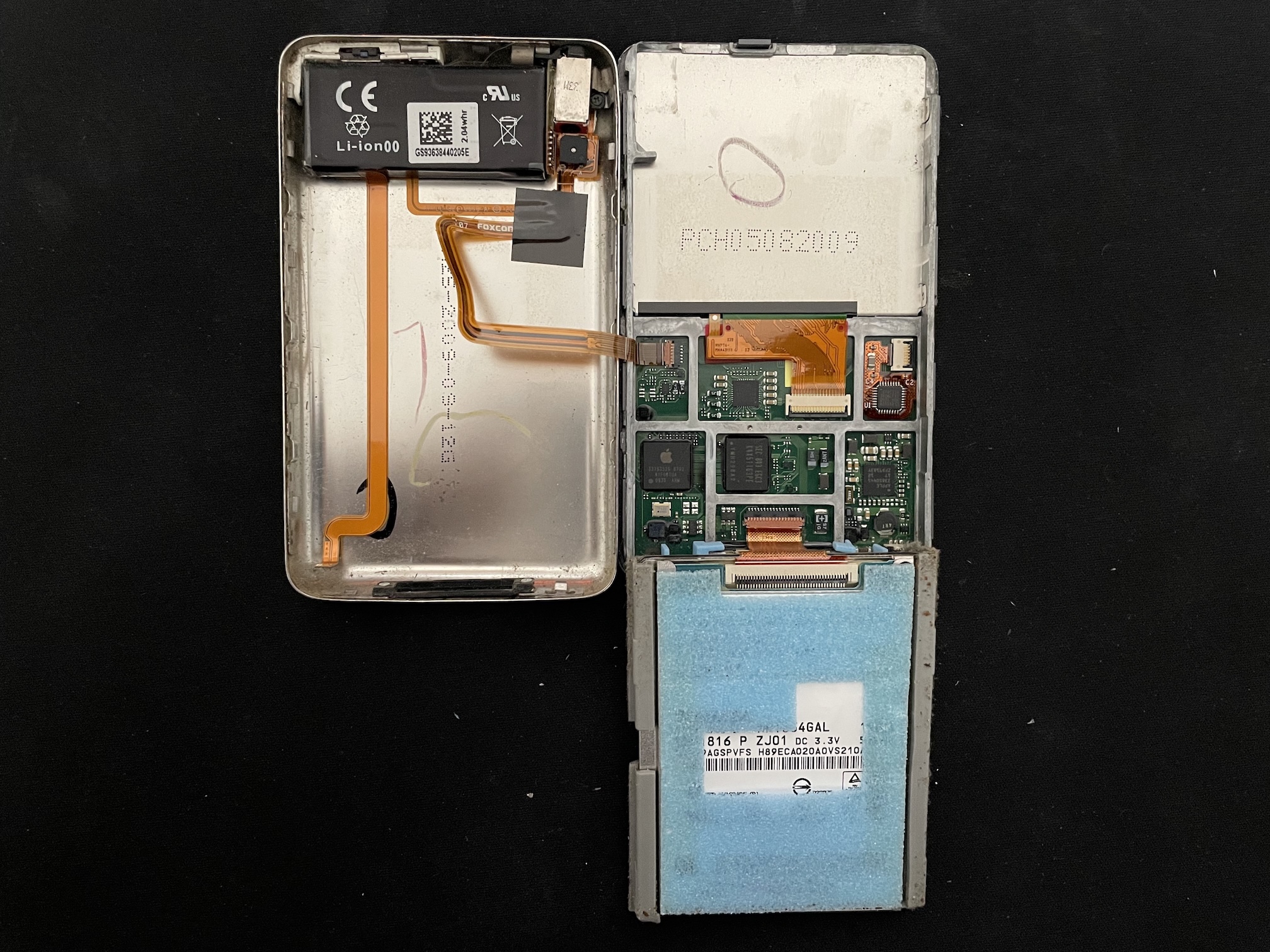
Upgrading storage
Once I had the iPod open, the first thing on my list was to deal with the hard drive. The Classic came with an old mechanical HDD inside. I swapped it out for an iFlash module with a microSD card, which is a much faster and more reliable solution.
The difference isn’t just about speed. With no moving parts, the iPod should now be far more resilient to everyday use, and the risk of the drive failing is practically gone. On top of that, battery life also gets a boost, since flash storage consumes less power than the original hard drive.
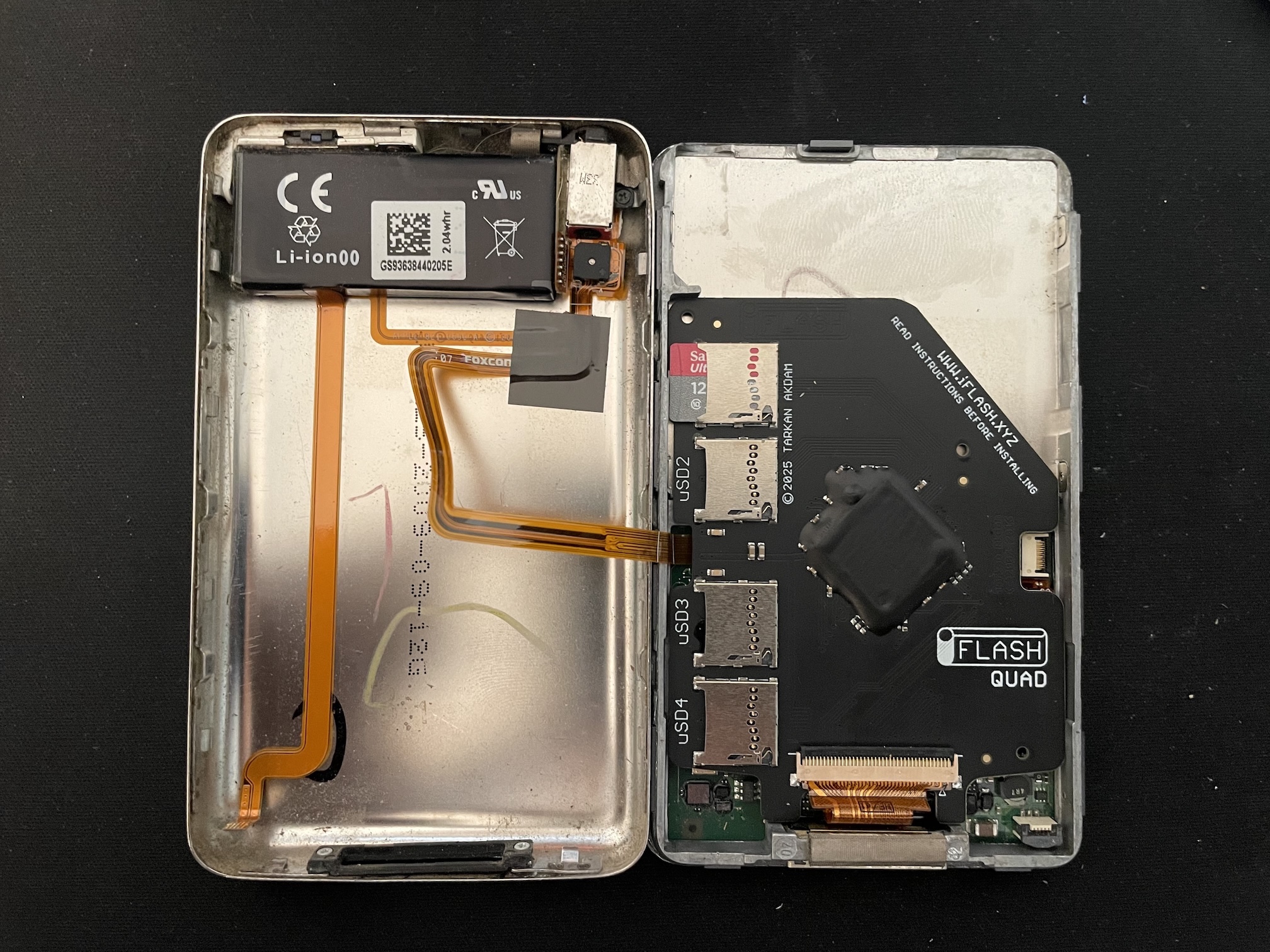
Adding a Taptic Engine
This one is really cool! It turns out some people have been adding a taptic engine from older iPhones to their iPods. The moment I saw it, I immediately fell in love with the idea. Having that subtle vibration feedback on an iPhone has always felt great, so the thought of bringing a similar experience to the iPod Classic was too good to pass up.
Digging deeper, I learned that the iPod actually has a tiny built-in buzzer that produces the familiar clicking sounds when you scroll through menus. And here’s the clever part: you can replace that speaker with the taptic engine. This mod is already a bit more technical and will require some soldering skills, but again, with the help of this video, I managed to accomplish it.
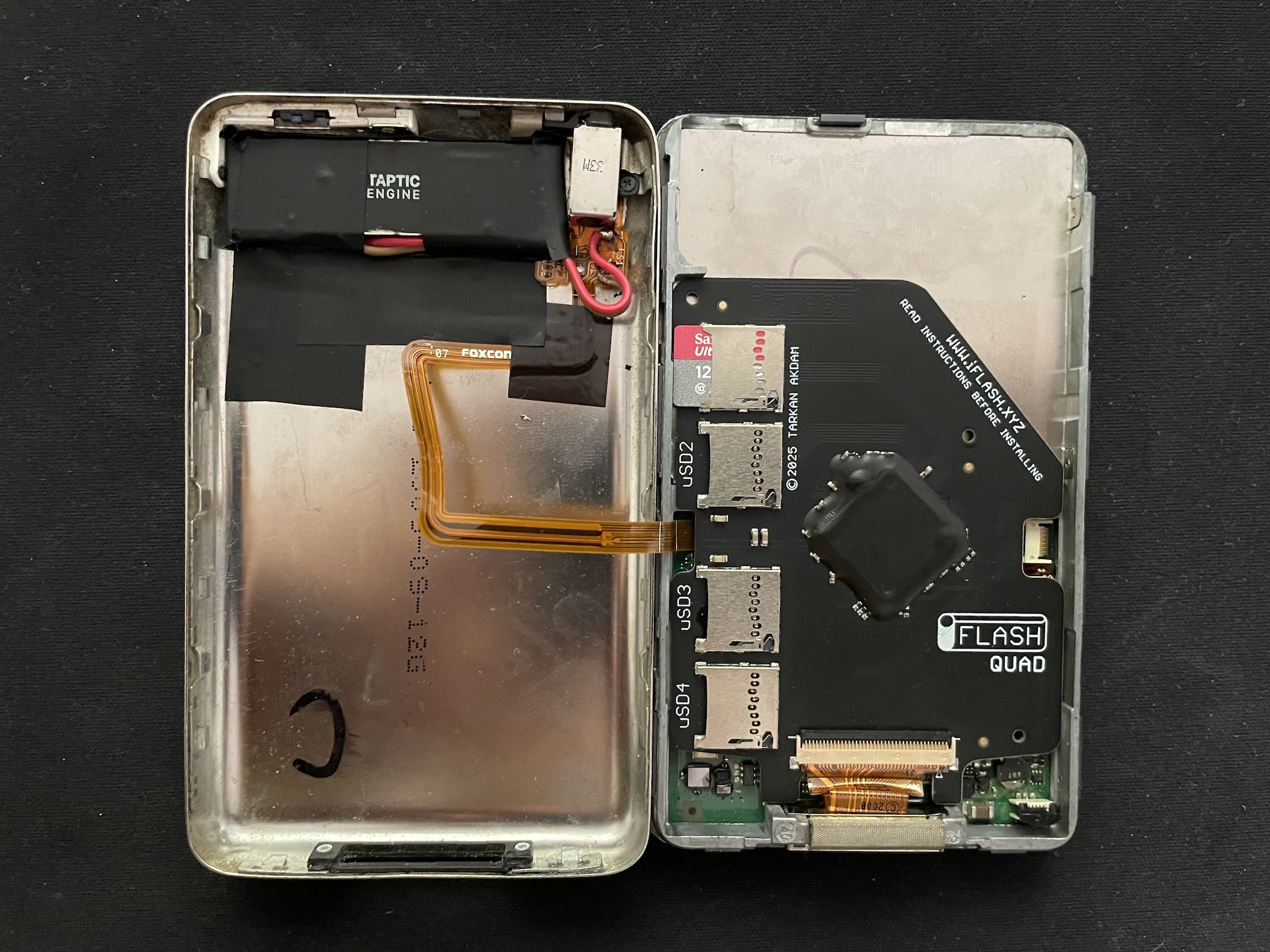
Replacing battery
Removing the old hard drive comes with another benefit - space. The HDD occupied a huge chunk of the inside, and once it was removed, there was suddenly plenty of room for a larger battery. Instead of the original tiny 550mAh cell, I upgraded to a 2000mAh one. That’s a huge jump, and it should translate into a fairly long play time.
Changing both the battery and the iFlash module was an easy task, but following this video assured me that I did everything properly.
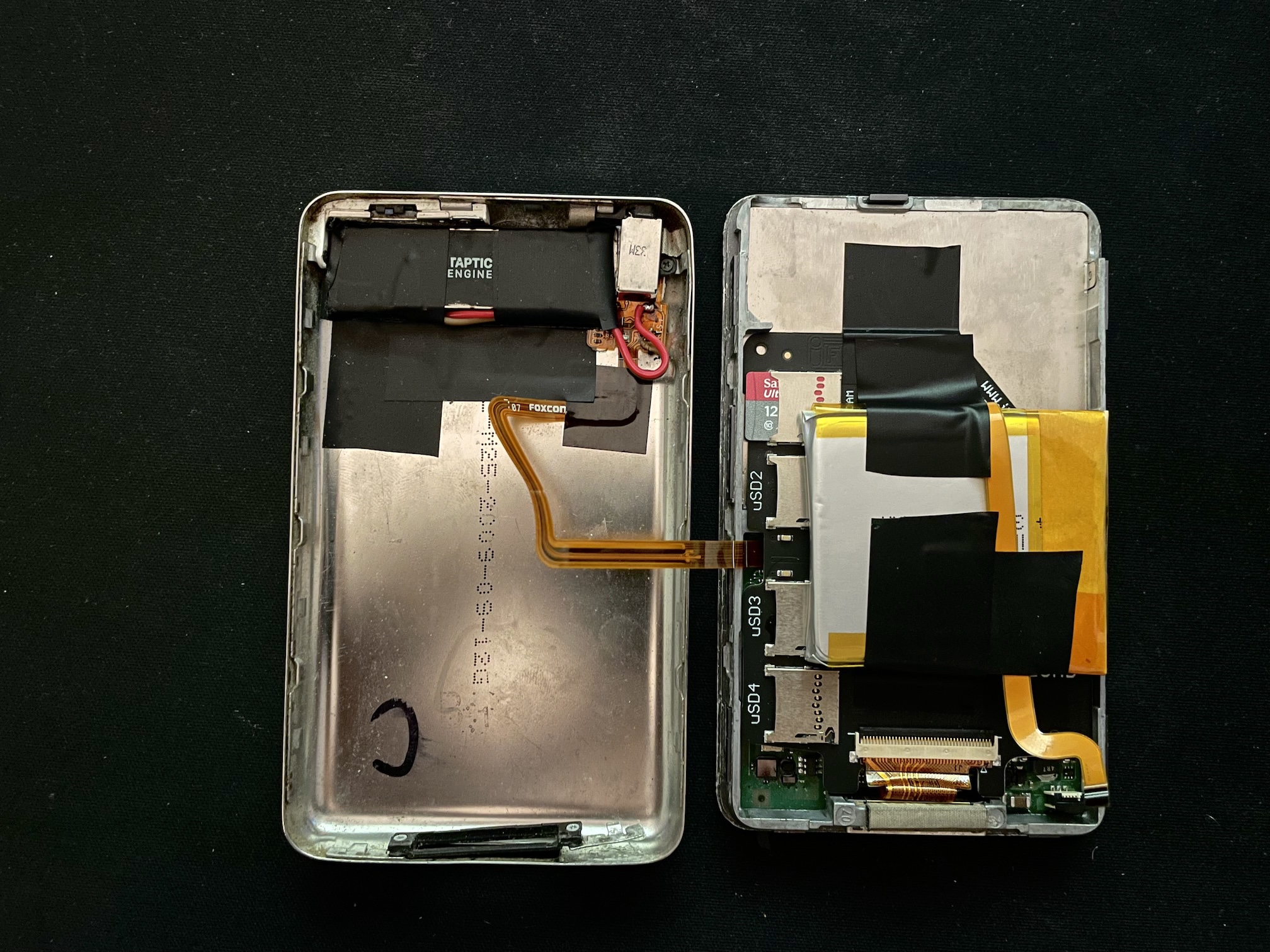
Recovering firmware
With all the new parts in place, the last step was to bring the iPod back to life. After powering it on, it immediately showed an error screen, which was expected, considering we removed the old HDD with the installed software.
The fix is straightforward - just plug it into iTunes. From there, you can restore the device and download the latest available software directly from Apple. A few minutes later, the iPod was up and running again 🎉.
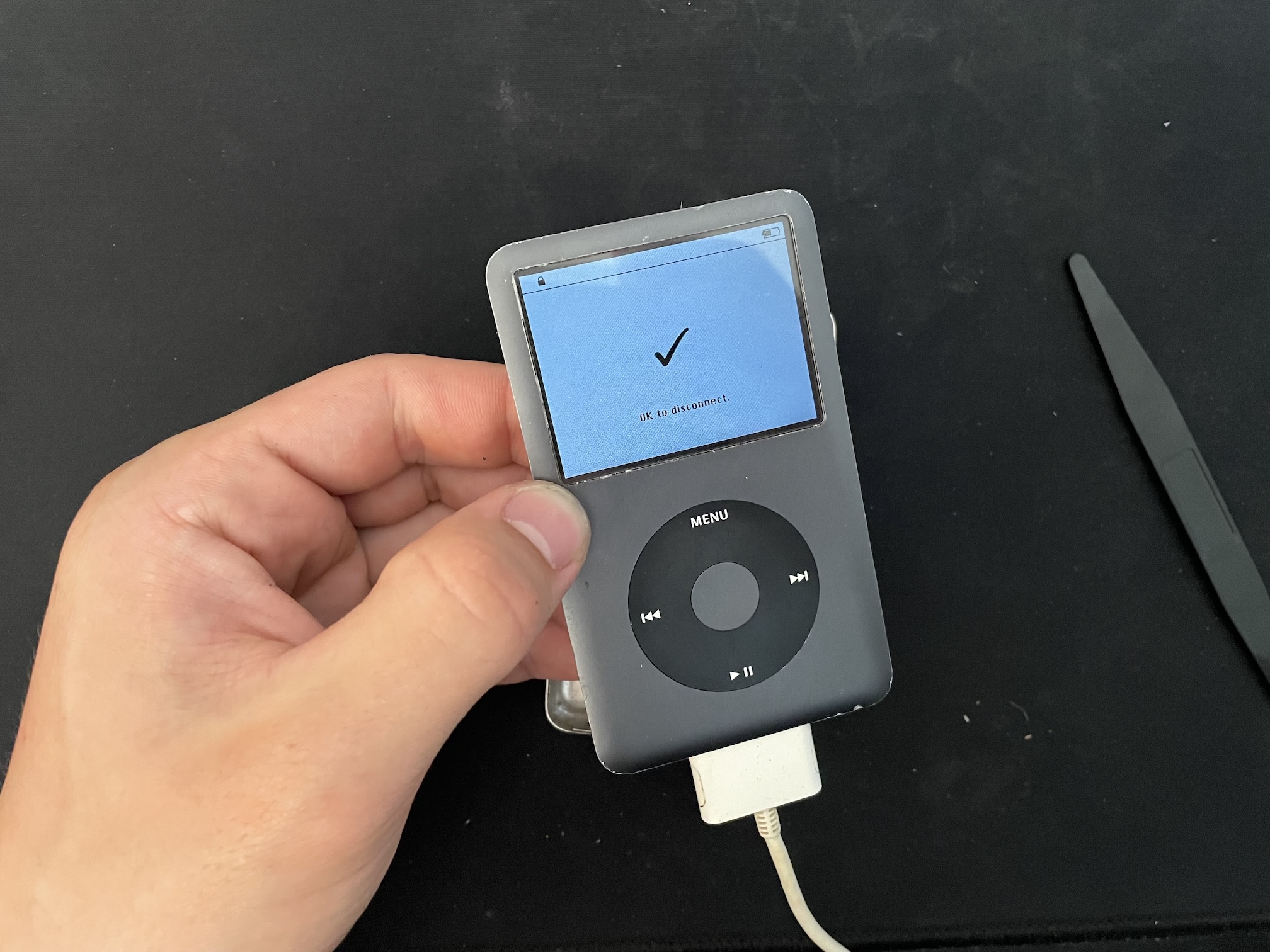
Conclusion
After all the upgrades, using the iPod Classic feels surprisingly fresh. It still has the charm and nostalgia of the original, but now it’s faster, more reliable, and just fun to use. Modding it turned a simple music player into a personal project I really connected with—tinkering with the hardware, discovering mods, and seeing it come back to life was genuinely enjoyable. In the end, it’s proof that even older gadgets can be made relevant—and that a little patience and creativity can turn a simple device into something uniquely yours.